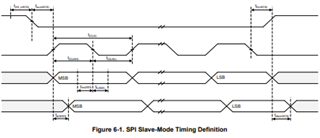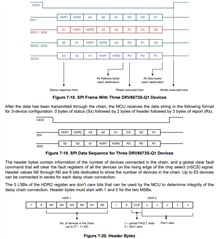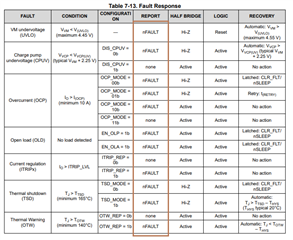Other Parts Discussed in Thread: DRV8873
Hello,
Customer is using 4 daisy-chained DRV8873SPWPRQ1. They have been using this part for a few years now without issue. They are working to update their Linux kernel, but running into issues.
Before the update, they had no issues. After the update, they are seeing strange SPI data. Specifically the SPI data looks correct on the logic analyzer going towards the driver chips (mosi), but the response seen on the bus (miso) is not what is expected. Lots of duplicate values instead of the expected response structure.
Any ideas on what the customer can check here?
Tyler
Here was the original message from the customer:
I have an issue with the DRV8873 SPI daisy chain communications with a newer Linux kernel and would like some help figuring what electrical conditions might affect the SPI output of these chips on our board. In short with a newer NXP kernel the SPI data looks correct on the logic analyzer going towards the driver chips (mosi), but the response seen on the bus (miso) is not what is expected. Lots of duplicate values instead of the expected response structure. So I'm wondering if there is another condition I can check for in the hardware that may cause this. We have 4 drivers in the daisy chain with a single shared CS pin.







